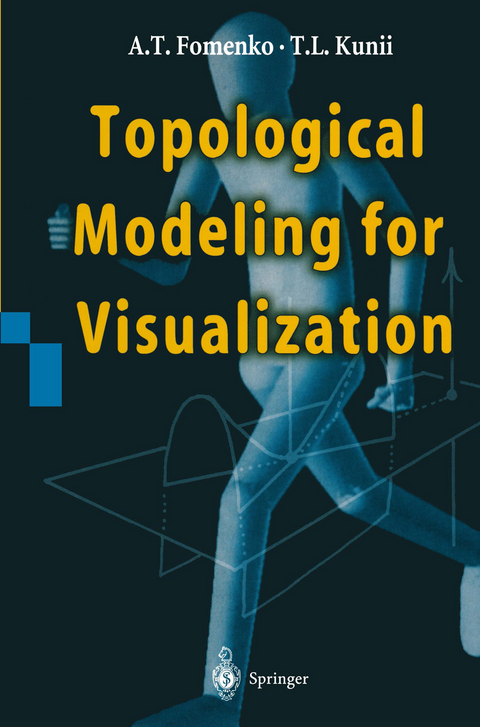
Topological Modeling for Visualization
Seiten
2013
|
Softcover reprint of the original 1st ed. 1997
Springer Verlag, Japan
978-4-431-66958-6 (ISBN)
Springer Verlag, Japan
978-4-431-66958-6 (ISBN)
The flood of information through various computer networks such as the In ternet characterizes the world situation in which we live. Understanding is the key to utilizing information worlds and to living with the changes in the real world.
The flood of information through various computer networks such as the In ternet characterizes the world situation in which we live. Information worlds, often called virtual spaces and cyberspaces, have been formed on computer networks. The complexity of information worlds has been increasing almost exponentially through the exponential growth of computer networks. Such nonlinearity in growth and in scope characterizes information worlds. In other words, the characterization of nonlinearity is the key to understanding, utiliz ing and living with the flood of information. The characterization approach is by characteristic points such as peaks, pits, and passes, according to the Morse theory. Another approach is by singularity signs such as folds and cusps. Atoms and molecules are the other fundamental characterization ap proach. Topology and geometry, including differential topology, serve as the framework for the characterization. Topological Modeling for Visualization is a textbook for those interested in this characterization, to understand what it is and how to do it. Understanding is the key to utilizing information worlds and to living with the changes in the real world. Writing this textbook required careful preparation by the authors. There are complex mathematical concepts that require designing a writing style that facilitates understanding and appeals to the reader. To evolve a style, we set as a main goal of this book the establishment of a link between the theoretical aspects of modern geometry and topology, on the one hand, and experimental computer geometry, on the other.
The flood of information through various computer networks such as the In ternet characterizes the world situation in which we live. Information worlds, often called virtual spaces and cyberspaces, have been formed on computer networks. The complexity of information worlds has been increasing almost exponentially through the exponential growth of computer networks. Such nonlinearity in growth and in scope characterizes information worlds. In other words, the characterization of nonlinearity is the key to understanding, utiliz ing and living with the flood of information. The characterization approach is by characteristic points such as peaks, pits, and passes, according to the Morse theory. Another approach is by singularity signs such as folds and cusps. Atoms and molecules are the other fundamental characterization ap proach. Topology and geometry, including differential topology, serve as the framework for the characterization. Topological Modeling for Visualization is a textbook for those interested in this characterization, to understand what it is and how to do it. Understanding is the key to utilizing information worlds and to living with the changes in the real world. Writing this textbook required careful preparation by the authors. There are complex mathematical concepts that require designing a writing style that facilitates understanding and appeals to the reader. To evolve a style, we set as a main goal of this book the establishment of a link between the theoretical aspects of modern geometry and topology, on the one hand, and experimental computer geometry, on the other.
I. Foundation.- 1. Curves.- 2. The Notion of a Riemannian Metric.- 3. Local Theory of Surfaces.- 4. The Classification of Surfaces.- 5. Abstract Manifolds.- 6. Critical Points and Morse Theory.- 7. Analyzing Human Body Motions Using Manifolds and Critical Points.- 8. Computer Examination of Surfaces and Morse Functions.- 9. Height Functions and Distance Functions.- 10. Homotopies and Surface Generation.- 11. Homology.- 12. Geodesics.- 13. Transformation Groups.- II. Advanced Subjects.- 14. Hyperbolic Geometry and Topology.- 15. Hamiltonian Systems with Two Degrees of Freedom.- 16. Topological and Orbital Analysis of Integrable Problems.- 17. Orbital Invariant of Integrable Hamiltonian Systems.- 18. Ridges, Ravines and Singularities.
| Zusatzinfo | 16 Illustrations, color; 414 Illustrations, black and white; X, 395 p. 430 illus., 16 illus. in color. |
|---|---|
| Verlagsort | Tokyo |
| Sprache | englisch |
| Maße | 155 x 235 mm |
| Themenwelt | Informatik ► Software Entwicklung ► User Interfaces (HCI) |
| Mathematik / Informatik ► Mathematik ► Geometrie / Topologie | |
| Mathematik / Informatik ► Mathematik ► Graphentheorie | |
| ISBN-10 | 4-431-66958-2 / 4431669582 |
| ISBN-13 | 978-4-431-66958-6 / 9784431669586 |
| Zustand | Neuware |
| Haben Sie eine Frage zum Produkt? |
Mehr entdecken
aus dem Bereich
aus dem Bereich
Aus- und Weiterbildung nach iSAQB-Standard zum Certified Professional …
Buch | Hardcover (2023)
dpunkt Verlag
34,90 €
Lean UX und Design Thinking: Teambasierte Entwicklung …
Buch | Hardcover (2022)
dpunkt (Verlag)
34,90 €
Wissensverarbeitung - Neuronale Netze
Buch | Hardcover (2023)
Carl Hanser (Verlag)
34,99 €


